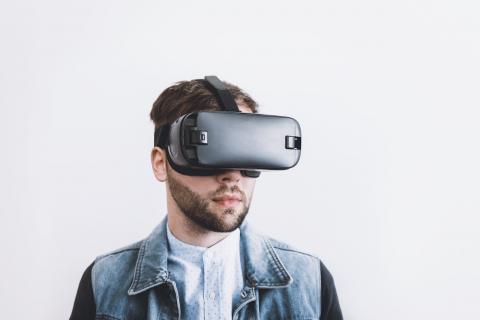Is AR the future of car dealerships?

Technology has simplified things but has taken away the ‘simple life’ all at the same time. As we get further away from the tradition of walking a car lot for hours and even days, we now find ourselves with the future at our fingertips, making the car buying process a whole new ball game. The kind of technology I am referring to is Augmented Reality and Virtual Reality, which can work hand in-hand-in to provide a unified customer experience. What’s the difference between AR and VR? AR is like real life whereas VR can be completely unrealistic.
You might have heard of these being used for visual entertainment purposes or have seen someone with a contraption on their head and remotes in their hands, completely immersed in an unknown world. It turns out that the options run far, including within the automotive industry. This technology can enhance the customers experience, increase a dealership's success and allow them to stand out from the competition.
Being that AR and VR are still fairly uncharted in the auto industry, there is much to learn and implement. A website with 2-D photos of available stock is a standard, but new online capabilities give us the opportunity to sell cars using 360-degree photos, videos, virtual tours, detailed specs, online help desks, and more -- all from a personal device. As car-buying becomes more and more virtual, these things are expected, and that is where AR and VR come into play.
This kind of technology in a dealership will give customers more room to be creative and discover exactly what they want. Instead of building out a vehicle on a website, AR or VR would allow customers to “sit in” a vehicle and choose interior trim options. They can “walk around” the vehicle, choosing the colors and exterior features they want. Not only is this a much more exciting route to showcase vehicles, it really allows the buyer to explore all the possibilities and possibly spend more on something they didn’t know they wanted.
In the future, it could eliminate the need to stock hundreds of vehicles, keeping only a few basic options in stock for people needing a quick solution. You wouldn’t have to worry about keeping excess inventory that may or may not get the attention you anticipated. These cars do not have to become a loss in the long run, depreciating as they sit. By investing in “the future” by having AR tours of all vehicle options, customers will probably spend more in the long run by custom ordering their cars.
AR and VR also allow for virtual test drives, driving simulations and can even be a teaching tool for how to service and care for your vehicle just by having an enhanced visual experience to follow along with. This is one of those “tip of the iceberg” topics, and I’m sure, with time, things will continue to evolve in and out of the dealership , making for a very interesting car buying experience. Could this be the future of how dealerships sell vehicles as the buying experience becomes more digitized? Maybe. And it may not be on your mind right now, but soon enough, there will be a distinction between dealers who implement new technology and those who don’t.






